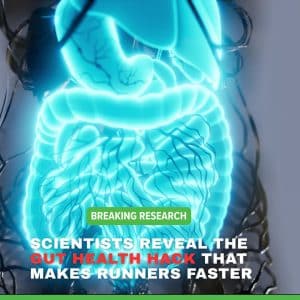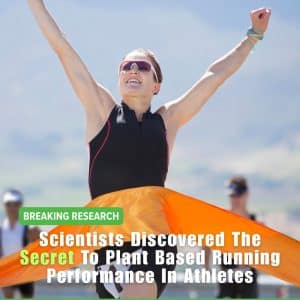Anyone who has had a stress fracture (or even a stress fracture scare) is likely to be hypersensitive to anything that can increase or reduce the risk. In the past we have talked about bone robbers, four foods that should be removed from a runner’s diet to help reduce the risk of getting a stress fracture.
But we know that most runners want to keep making improvements. Those of us who have been through a fracture, know how much pain it brings, both physically and emotionally, and want to avoid it in any way we can in the future.
The beauty of our bones is that they are living tissues, continually repairing and rebuilding themselves. So, if you bones are currently in a frail and fragile state, they don’t have to stay in that condition. In addition to removing the “bone robbers” we mentioned, you can add the following foods and nutrients to your diet to rebuild, repair and strengthen your bones!
By making some focused dietary changes you can reduce your risk of stress fractures and possibly prevent your next stress fracture.
3 Minerals (other than calcium) + 2 Vitamins = Good Food & Strong Bones
Here’s the deal:
There are three minerals and two vitamins that play large roles in the rebuilding of bone tissue. The three minerals are magnesium, potassium an silicon. The two vitamins are vitamin D and Vitamin K.
Let me explain how these minerals and vitamins help rebuild the bone tissue, as well as give you a list of great foods to add to your current diet that contain these nutrients.
Magnesium
60% of dietary magnesium is stored in bone tissue and it plays multiple key roles in bone health.
First, magnesium contributes to the structure of bones, along with calcium and phosphorus. Second, magnesium regulates calcium transport into the bones. Third, magnesium triggers the hormone calcitonin, which helps protect the bones when the body is imbalanced, by pulling calcium from the blood and tissues back into the bones. Finally, magnesium helps to change vitamin D2 into vitamin D3, it’s active form, which increases calcium absorption.
Foods High in Magnesium:
Broccoli, seeds: flax, pumpkin and sesame, nuts: brazil and almonds, dark chocolate, molasses and dried herbs
Potassium
As runner, we all know that potassium can play a large role in reducing muscle soreness after a hard run, but did you know that potassium also is a key component of strong healthy bones?
Our bones are used as a “alkaline” resource for our bodies to decrease extra acid. (we wrote about this in detail in our article on pH) Once our body has used all it’s free floating alkaline resources it begins to leech the alkalizing minerals from our bones. Having significant amounts of potassium gives our body’s a free alkalizing mineral to use instead of breakdown bone tissue to get it.
Foods High in Potassium:
Bananas, sweet potatoes, broccoli, avocados, dried apricots, pistachios, seeds: pumpkin, sunflower and squash, fish: salmon, halibut and tuna, beans and medjool dates.
Silicon
Silicon is a trace mineral and is essential in helping to develop and maintain the structure and function of connective and skeletal systems.
Several studies have shown that silicon plays a beneficial role in bone health. A 2003 study published in the Journal of Bone and Mineral Research found, “higher dietary silicon intake in men and women may have salutary (good/beneficial) effects on skeletal health, especially cortical bone health..”
Foods High in Silicon:
Onions, bell peppers, apples, raisins, almonds, raw cabbage, pumpkin, cucumber, carrots, and oranges.
Vitamin D
Vitamin D plays a very large role in protecting and preventing you from getting a stress fracture. Every single cell in the human body has a vitamin D receptor on it.
Vitamin D stimulates calcium absorption in the gut, and balances calcium and phosphate levels in the blood. Keeping calcium and phosphate levels balanced allows for healthy bone mineralization. Osteoblasts and Osteoclasts, the cells that build and remodel our bones, require vitamin D to function.
Without proper amounts of vitamin D, bones will become brittle and thin.
Foods High in Vitamin D:
Fish, cod liver oil, oysters, sardines (with bones), organic eggs, mushrooms
Vitamin K
There are three proteins in bone that play a significant role in repairing and rebuilding bone tissue. These three proteins, osteocalcin, matrix Gla Protein, and protein S. Osteocalcin all require Vitamin K to complete their function of contributing to the rebuilding of bone tissue.
Foods High in Vitamin K:
Fresh and dry herbs, dark leafy greens (spinach, collards, kale, chard), scallions, brussels sprouts, broccoli, asparagus, cabbage, prunes
Food holds power and is a key component to running your best
The “foods” that I exposed in the “bone robbers” article hold the potential power to contribute to a stress fracture.
The foods listed in this article hold the potential power to prevent and protect you from a stress fracture. Make the changes in your diet today to remove “bone robbing” food and add or increase these delicious bone-building foods.
Take matters into your own hands, keep yourself running and off the sidelines through the power of the foods you consume!
Need Help With Your Stress Fracture?
Download our Stress Fracture Treatment Outline inside your Insider Members area.
It’s a PDF with the treatment options for runners with stress fractures.
[bctt tweet=”Helpful post from @Runners_Connect with the foods to prevent stress fractures (and stay healthy!)” via=”no”]





5 Responses
Can you comment on the comparison of dietary Vitamin D versus the Vitamin D your body makes when exposed to sunlight? My understanding is that 30 minutes at peak sun while wearing t-shirt and shorts will results in 10,000 IUs of Vitamin D being produced by the skin, whereas it’s difficult to ingest those quantities (and its unclear to me if they’ll be absorbed or utilized in the same ways).
Great question Adam!
I believe this is a very confusing vitamin for most people. Vitamin D from the sun and vitamin D from a supplement will be used in the same way in the body as long as the vitamin D taken as a supplement is the in form of D3. If it was completely true, that we could get 10,000 IUs of Vitamin D from the sun, while wearing a shirt and shorts for 30 minutes, we would see significantly less D deficiencies. Now, it is possible to get 10,000 IUs from the sun, but the conditions have to be perfect.
First, your skin tone needs to be relatively light. People with darker pigments don’t absorb UVB rays as well. Second, you need to be slim, because your weight can effect how well you absorb vitamin D. Vitamin D is a fat soluble vitamin; the more fat you have on your body, the more vitamin D will get stuck in your fat cells and not make it to the rest of your body. Third, age effects our bodies ability to absorb vitamin D. Forth, the sun’s UV index needs to be greater than 3. Fifth, if you live north or south of equator by 37 degrees you aren’t getting enough UVB rays to produce enough Vitamin D all year round. In January, in New York, you would need to spend 4.5 hours in the sun, at peak hours, to get enough Vitamin D. Finally, even an SPF of 8 can block up to 95% of the UVB rays needed to make vitamin D.
So, as you can see, it would take some SERIOUS effort and intentionality for each of us to get all the vitamin D we needed from the sun! I am in complete support of getting as much of your vitamin D from the sun as you possibly can, however I also believe that supplementation of Vitamin D is a good idea.
Is there a way to recognize a high quality food (vitamin) supplement? (for example: there is a difference between organic and inorganic supplements)
The foods you list for Vitamin K are the foods that give you Vitamin K1 which is associated with proper clotting. Vitamin K2 is what we need to get the calcium into our bones and teeth (and not in our arteries). A lack of healthy intestinal bacteria (from antibiotic use, etc.) will prevent the conversion process from K1 to K2, so some people will need to eat those specific foods that contain Vitamin K2 (natto, goose liver pate, gouda cheese, brie cheese, pasture fed eggs, pasture fed butter, etc.) or take a K2 supplement. I finally got rid of chronic shinsplints with a Vitamin K2 supplement (MK7) and incorporating the right cheese, eggs, and butter into my diet.
Hi Kacy, thanks for sharing. Great sources of vitamin K for our readers to check out.